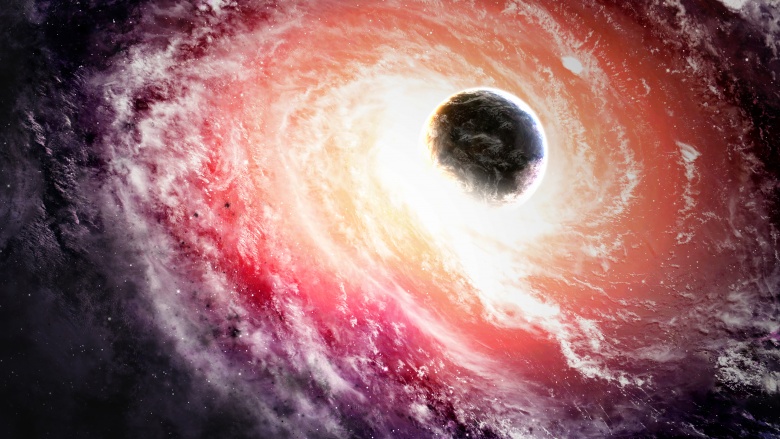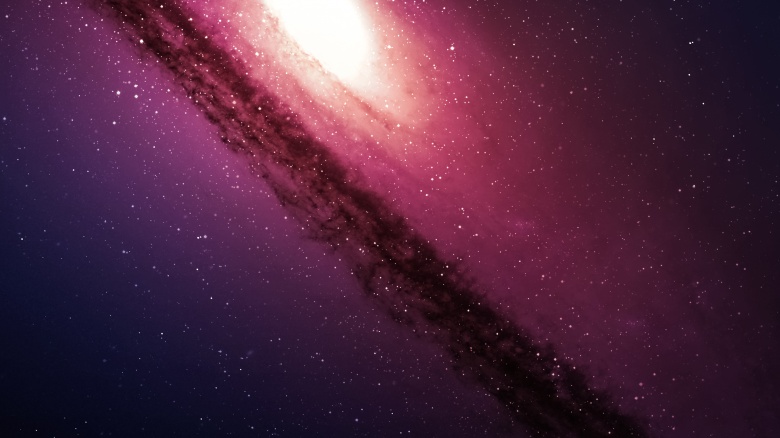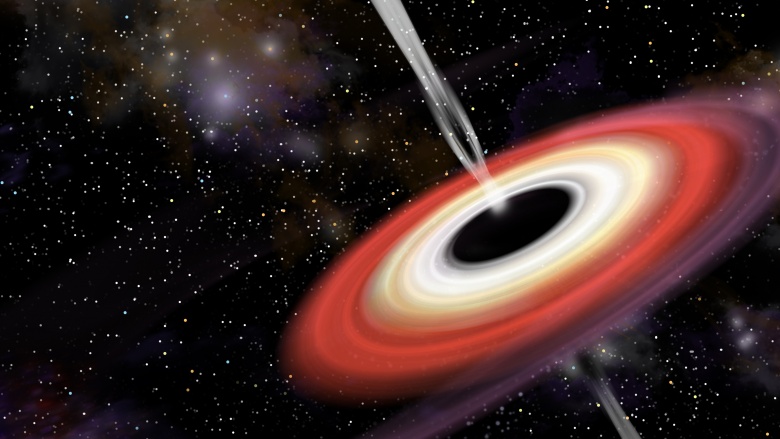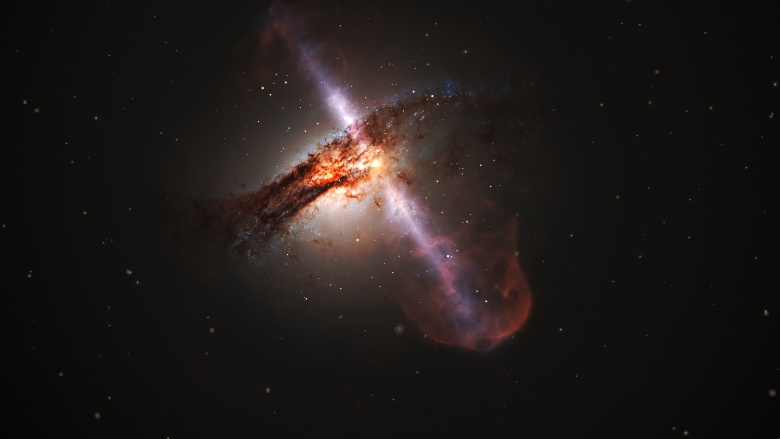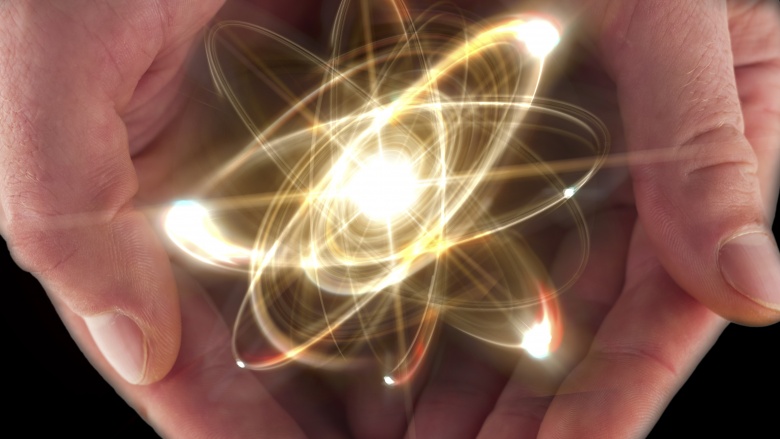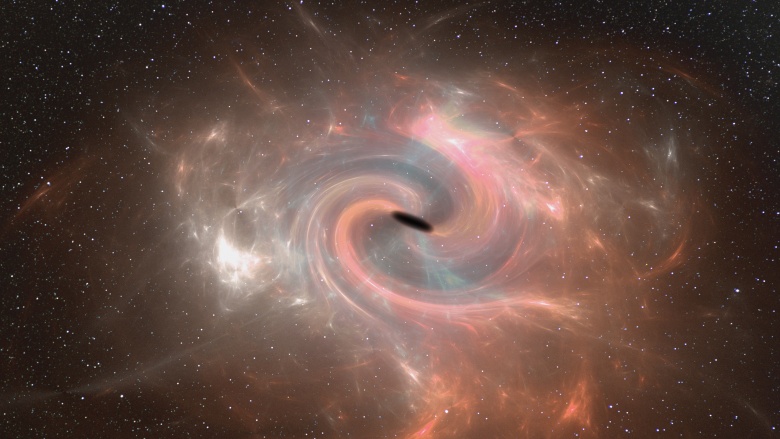10 Reasons Black Holes Are Terrifyingly Awesome
Black holes are one of the biggest mysteries in the universe, and probably will remain so if NASA doesn't get on the ball and solve them. However, as much as people understand the basic mechanics of a black hole, here are some awesome and somewhat-terrifying facts that make them possibly the coolest cosmic entities in the visible universe.
Black holes cannot be seen, nor are they actual holes
Black holes aren't "holes," so much they're really dense points called singularities, and they're totally invisible to the naked eye. Think of the smallest thing you can, and then compress it into a single point. It's that, basically. Black holes are the compressed remains of a collapsed star, usually a supernova of very large stellar mass. Supernovas are about 20 times more massive than our local Sun, which will die quietly, without too much black-holey fuss, and likely fade into a white dwarf. This won't happen for at least another four to five billion years, so you have time to plan for that adventure.
Massive stars, the kinds that make our Sun look like a blip on the interstellar map, are the ones that get to die loudly, possibly screaming, and leaving quite the mess in their wake. Then, as if that's not dramatic enough, the remains begin to collapse in on themselves, forming the dense singularity of impossible gravitational forces we know as a black hole. Unfortunately, we can't see them, because light can't escape their extreme gravitational forces, but we have developed ways to detect them. Such as ...
To find a black hole, one has to observe the objects around it
One of the most well-known facts about black holes is that light can't escape them. This also aids in our detecting black holes, to make sure none sneak into our apartment. Since the gravitational influence of the black hole warps spacetime and swallows light—which couldn't possibly be healthy, so it isn't recommended you try this—one can detect a black hole by finding gravitational anomalies. This can range from a star mysteriously being eaten, an accretion disk around the black hole, and one of the coolest visuals in space: gravitational lensing. This occurs when an interstellar body's gravity bends the light—and thus, the image—of the objects around it. It creates a funhouse mirror effect, as the objects are reflected and refracted infinitely around the black hole's event horizon. This creates the hole-like image that gives the entity its name.
There's a supermassive black hole at the center of our galaxy
That's right — the Milky Way conceals the mysterious darkness at its very core. One of the reasons for this is that galaxy centers are usually where younger, more vibrant stars reside. Stars are born and die closer to the center, and likely at the time the Milky Way was forming, it was born from a massive interstellar explosion that came beforehand.
Not to worry, however — scientists and experts have assured us that we're in no danger of being swallowed by the monster, although we can observe what it does to the space around it from afar, thanks to Hubble and other high-powered telescopes. Spoiler: it doesn't look fun.
Time does not make sense around a black hole
One of the most misunderstood concepts in astrophysics is time, and that's because time itself becomes a dimension when in space. Time passage depends on distance between the points and the speed of the object, and it's measured relative to where you are in any point in the universe. Because none of us have left Earth yet (NASA, we're waiting on you to make that happen), all our perception of time is relative to the Earth's place in the universe. For example, if we were to leave Earth traveling at the speed of light, if we return weeks or months later, several years, or possibly over a decade of Earth time will have passed in comparison. This effect is called time dilation.
A black hole's gravitational pull is so strong, it actually warps the "fabric" of space and time (called, appropriately enough, spacetime) to the point where time actually slows down. If you observe your friend falling into a black hole—whom we all think is very foolish for this, by the way—time will appear to slow down as they near the event horizon, which is the border of a black hole. Once crossed, there's no escape. To the observer, the person will appear to have stopped, then they'll begin to turn red as the spectrum of light is slowly bent and warped away, and then they'll vanish.
To you—the observer—your friend will never seem to get there across the event horizon. But to your friend, who is still foolish and now about to be very deceased, time runs as smoothly as it's always done. They cross the horizon in seconds, while years have passed to the observer. It makes one wonder why time even exists, if black holes are just out here bending and twisting and slowing it down.
Black holes are actually efficient energy users
For a singularity that creates a veritable sinkhole in the fabric of spacetime, black holes are actually miraculously efficient energy generators. This has to do with the accretion disk that forms around the black hole. An accretion disk is exactly what it says on the tin: an accumulation of matter that was unlucky enough to get too close. Outside of the event horizon, the matter spins around the black hole at a slower rate. However, nearer to the event horizon, matter is churning faster around the gravity well, and this churning generates heat ... some billions of degrees Fahrenheit to be approximate, which turns the mass from the material into energy, in a candidate for best-band-name-ever called blackbody radiation.
Black holes actually make noise!
That's right — these monsters can't seem to shut their trap for any reason. While actual sound in space is impossible due to the lack of air, specialized instruments can be used to "hear" the supercharged particles of a black hole when it swallows something. Imagine listening to your aggravating roommate swallow and gulp loudly at your table. That's a black hole.
Fortunately, not all black holes are noisy in this way; it's also been discovered that some black holes sing. That's right, NASA recently detected a "chorus" of black holes singing, as it were, in X-rays. It's truly only a matter of time before they appear on shows like The Voice and literally crush the opposition.
Black holes belch (theoretically)
Not only are black holes excellent at consuming everything that comes near them, they also get gassy when they do it! Scientists theorize that eventually, the black holes release the energy in a spray of matter, light, and matter-killing radiation — scientists call this a white hole and, in keeping with its Opposite Day reputation, they don't take in matter so much as they spray it in every possible direction, observable or not.
While all of this is still a theory, a lot of the study gone into black holes has brought us closer to finding out if these mysterious monsters have any kind of table manners at all. It sheds new perspective on the question of where are they keeping all this spacestuff?
Black holes eventually evaporate
As if these revolving sinkholes weren't frightening enough, research suggests that, eventually, black holes just up and vanish and evaporate. While nothing can escape a black hole, radiation does emit from the entity while it stuffs itself with anything unfortunate enough to wander near its mouth. Scientists theorize that when a black hole is emitting radiation, it is likely losing mass.
Astrophysicist Stephen Hawking became famous by discovering these radiation emissions — which are now known as Hawking Radiation — proving that black holes don't live forever. In 1974, Hawking's research suggested that a black hole's mass decreased due to negative energy particles falling into it, while positive particles remained outside and even escaped. Just one more reason to always think happy thoughts.
Black holes aren't a bunch of suckers
Contrary to popular belief, black holes are not cosmic vacuum cleaners, encroaching on us with their gaping, sucking maws. They are simply dense singularities—some rotate, some don't. Falling into a black hole, however, would suck. A lot.
Black holes are like unseen sinkholes in space, and so instead of sucking things in, the unfortunate matter or object simply falls in, orbiting around it until it's pulled apart by the hole's unfathomable gravitational forces. Whatever's left of the poor unfortunate soul then joins the densely packed singularity at the bottom. It's a long way down, and unfortunately, not one with any decent odds of survival.
Black holes are spherical, not funnel-shaped
When not being misclassified as a circle, black holes are often depicted as funnel-shaped. This is equally egregious, as the funnel is actually the artistic representation of the black hole's deep gravity well. Spacetime is something like a stretched-out rubber sheet with gridlines around it, and every object on it makes a depression depending on its mass and gravitational pull. A black hole creates a seemingly infinite depression in the fabric of spacetime, stretching and curving the grid lines as its gravity stretches and pulls the spacetime down toward the singularity. This creates the infamous funnel image. Physicists have recently lost their collective marbles over the discovery of gravitational waves, confirming Einstein's theory of their being-a-thingness.
In truth, we're currently undertaking many studies to unravel the many remaining mysteries of black holes. Theories have been put forward, from the multiverse theory, to the Einstein-Rosen Bridge theory — or what is commonly called a wormhole — and even a theory that black holes can one day be used to power interstellar spacecraft. Black holes are a staple of speculative science fiction, and while we may never find out what's inside, it's fun to think about the mechanics of these mysterious entities that, like any of us at Thanksgiving, can't seem to stop eating everything that comes near them.

